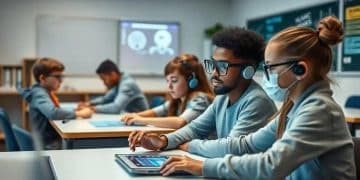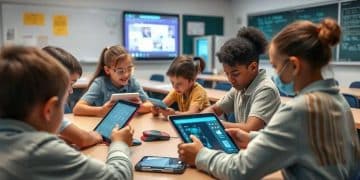Insights on school technology integration for better learning
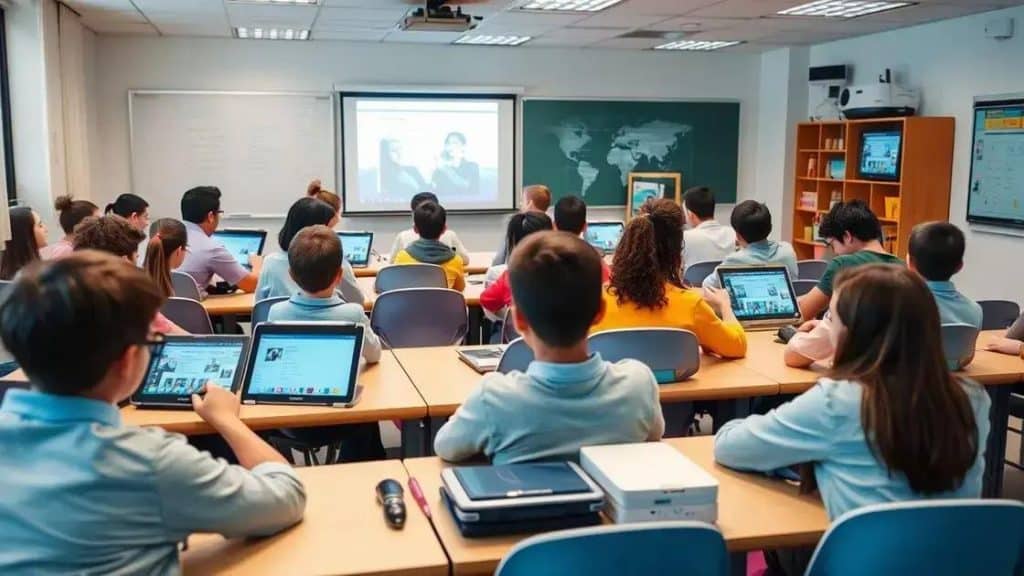
Integrating technology in schools enhances student engagement and learning experiences while addressing challenges like access disparities and the need for teacher training.
Insights on school technology integration illustrate how innovative tools can reshape the educational experience. Are you curious about how integrating technology might benefit students and teachers alike? This article delves into the transformative power of tech in classrooms.
Understanding the role of technology in education
Understanding the role of technology in education is crucial for shaping modern learning environments. Technology not only enhances classroom experiences but also prepares students for a digitized world.
Teachers now have access to various tools that can transform how they deliver lessons. For example, interactive whiteboards allow for engaging presentations and participation from students. Online resources enable teachers to provide a wealth of information quickly, making learning more accessible.
Impact of Technology on Learning
The integration of technology impacts learning in many ways. It supports personalized learning and gives students a chance to explore subjects at their own pace. Furthermore, students can collaborate with peers across the globe, fostering a diverse learning experience.
- Increased engagement through interactive learning modules.
- Access to real-time feedback and assessments.
- Preparation for technology-driven careers.
Another significant advantage of technology in education is the ability to track progress over time. Teachers can analyze students’ performance and adapt their strategies accordingly. This data-driven approach helps in addressing individual student needs effectively.
Tools Shaping the Classroom
Various tools are emerging that are reshaping the educational landscape. Learning management systems (LMS) help streamline course materials and communication. Cloud computing allows for easy access to files and learning resources from anywhere.
- Collaborative platforms like Google Classroom.
- Educational apps that facilitate interactive learning.
- Video conferencing tools enhancing remote education.
Moreover, as technology continues to evolve, educational institutions need to stay updated. The shift towards blended learning models represents a significant change in traditional teaching methods. With both physical and digital components, students can benefit from the best of both worlds.
Benefits of integrating technology in schools
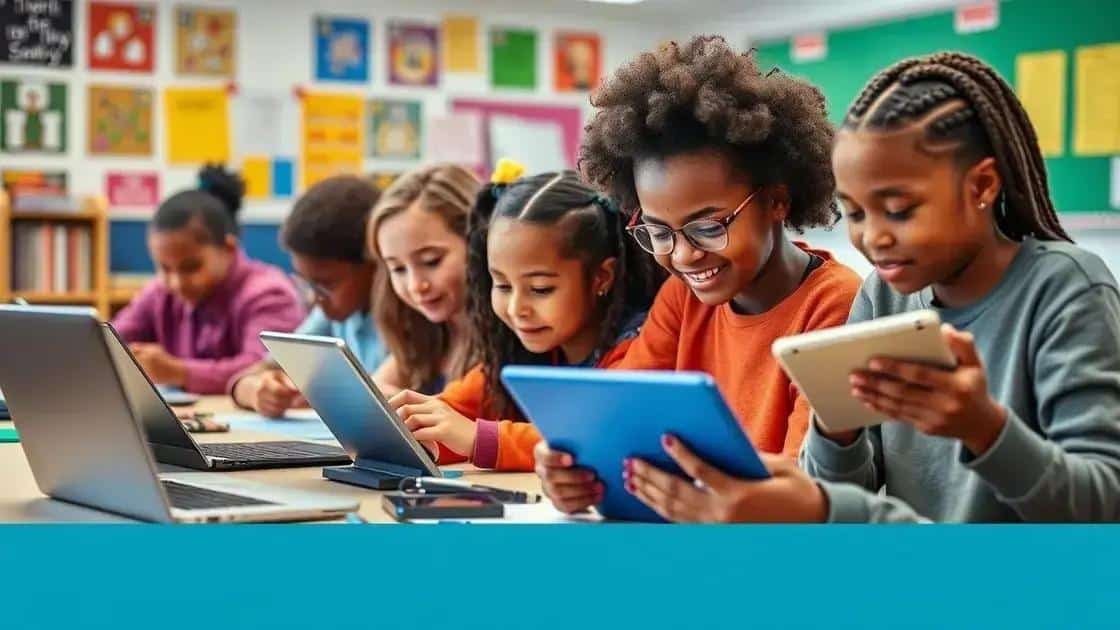
The benefits of integrating technology in schools are manifold and can significantly improve the learning experience for students. Modern classrooms that utilize technology offer more engaging and interactive learning environments. This approach not only captivates students’ attention but also fosters critical thinking and problem-solving skills.
One of the most notable advantages is the ability to customize learning. With various technological tools available, teachers can tailor lessons to meet the unique needs of each student. For instance, educational software can adapt to a student’s learning pace, providing additional support where needed.
Enhancing Engagement and Participation
Integrating technology enhances student engagement and participation. By using interactive tools, such as multimedia presentations or online quizzes, teachers can create a dynamic classroom atmosphere. Students are more likely to participate actively when lessons are visually appealing and include various media formats.
- Gamification techniques motivate students through challenges.
- Real-time polling encourages all voices to be heard.
- Virtual simulations provide hands-on learning experiences.
Additionally, technology facilitates collaborative learning strategies. Students can work together on projects through shared platforms, promoting teamwork and communication skills. This collaborative approach not only makes learning more enjoyable but also prepares students for future workplace environments where collaboration is essential.
Access to Resources and Information
Another essential benefit is the vast access to resources. Technology enables both students and educators to search for information quickly and efficiently. Online libraries and educational websites offer a plethora of knowledge that enhances research and learning.
- Access to global information beyond traditional textbooks.
- Opportunity for students to learn from experts through webinars.
- Visibility into current events that enhance civic education.
The implementation of technology also opens doors for differentiated instruction. Teachers can incorporate various resources and approaches to cater to different learning styles. This adaptability ensures that every student has the opportunity to succeed based on their unique strengths.
Best practices for effective technology use
Knowing the best practices for effective technology use in schools can maximize the learning experience for students. Implementing technology successfully requires planning and awareness of both its benefits and challenges. Educators must consider how technology can best serve their students’ diverse needs.
One of the key practices is to integrate technology seamlessly into lesson plans. Rather than using it as an add-on, it should enhance existing curriculum goals. This integration allows students to see the relevance of technology in their learning.
Creating a Balanced Approach
A balanced approach involves using technology alongside traditional teaching methods. For instance, teachers can combine interactive digital tools with hands-on activities. This offers a variety of learning opportunities that cater to different styles and preferences. Alongside this, it’s vital to provide clear guidelines for technology use.
- Establishing rules about device usage during class.
- Encouraging respectful communication via digital platforms.
- Providing training on how to use tools effectively.
Support systems also play a crucial role in effective technology use. Teachers must have access to ongoing professional development to stay updated on new tools and methods. Additionally, fostering a culture of collaboration among staff can lead to more innovative uses of technology.
Encouraging Digital Citizenship
Another important practice is teaching students about digital citizenship. Educators should include lessons on internet safety, privacy, and the importance of respectful online behavior. By instilling these values, students will learn to navigate the digital world responsibly, both in school and beyond.
- Promoting critical thinking about online information.
- Teaching students how to protect their personal data.
- Encouraging positive interactions in digital communities.
Ultimately, the goal of using technology in education is to enhance student learning experiences. By following these best practices, educators can create an engaging, respectful, and effective learning environment that prepares students for their future.
Challenges and considerations in tech integration
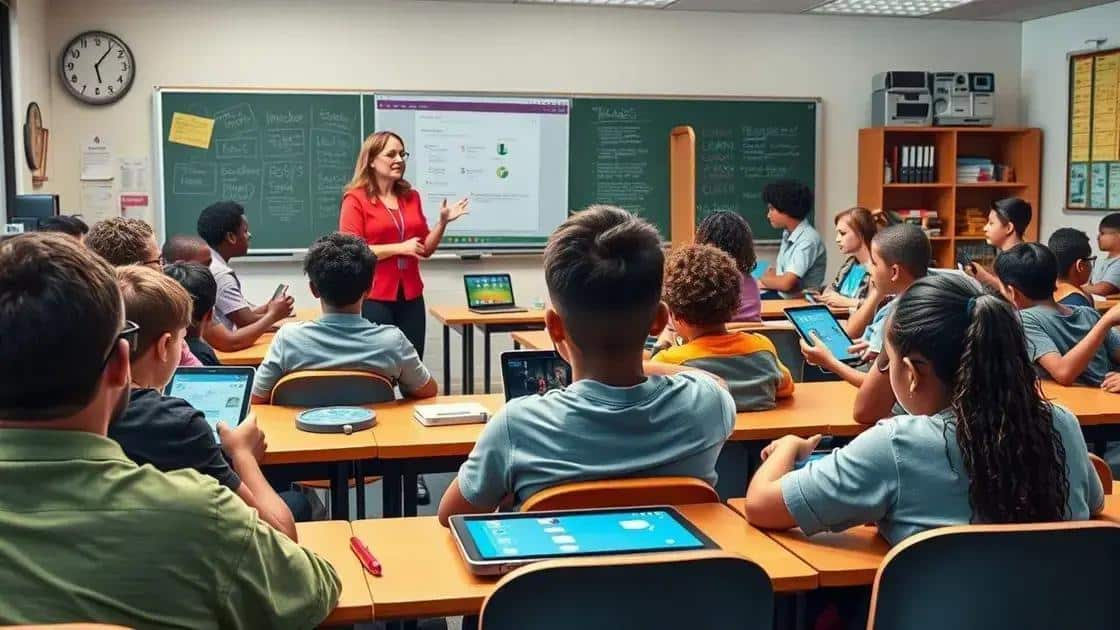
Integrating technology in schools presents several challenges and considerations that educators must address. While technology offers numerous benefits, it also comes with obstacles that can hinder its efficacy in the classroom. Recognizing these challenges is essential for successful implementation.
One major challenge is the digital divide. Not all students have equal access to technology, which can create disparities in learning opportunities. Schools must find ways to ensure that every student has the necessary tools and internet access to benefit from technology.
Teacher Training and Support
Another critical consideration is the need for proper training. Teachers may feel overwhelmed by new technologies or unsure how to effectively integrate them into their curriculum. Professional development opportunities can help educators become more confident and skilled in using technology.
- Regular training sessions on new tools and best practices.
- Mentorship programs pairing experienced teachers with newcomers.
- Access to online resources and communities for support.
Moreover, the selection of appropriate technology is vital. Educators should choose tools that align with their learning objectives and are user-friendly for both students and teachers. Evaluating technologies before implementation can prevent future complications and ensure that they serve their intended purpose.
Maintaining Student Engagement
Another challenge lies in keeping students engaged. While technology can make learning more interactive, it can also become a distraction if not managed properly. Teachers should establish clear expectations and guidelines for technology use in the classroom.
- Setting rules for technology use during lessons.
- Using applications that promote focused learning.
- Incorporating interactive activities that utilize technology effectively.
Additionally, ongoing assessment is necessary to measure the effectiveness of technology integration. Educators should continually evaluate how technology impacts student learning and engagement. This process allows for adjustments and improvements, ensuring that technology serves as a valuable asset in education.
| 🌟 Opportunities | Enhances learning and engagement for students. |
| 📈 Training | Educators need ongoing training for effective use of technology. |
| 🌐 Access | Addressing the digital divide is crucial for equity. |
| 🔍 Engagement | Maintaining student interest is key to success. |
| ⚖️ Balance | Integrate technology with traditional methods for best results. |
FAQ – Frequently Asked Questions about Technology Integration in Schools
What are the main benefits of integrating technology in education?
Integrating technology enhances student engagement, allows for personalized learning, and prepares students for future careers in a digital world.
How can teachers effectively integrate technology into their lessons?
Teachers can start by incorporating technology that aligns with learning objectives and by using it to engage students in interactive activities.
What challenges do schools face when implementing technology?
Schools may encounter issues such as the digital divide, lack of training for teachers, and ensuring that technology doesn’t distract students.
How can schools ensure that all students have access to technology?
Schools can provide devices for students, implement programs to increase internet access, and offer resources for families to bridge the digital divide.


